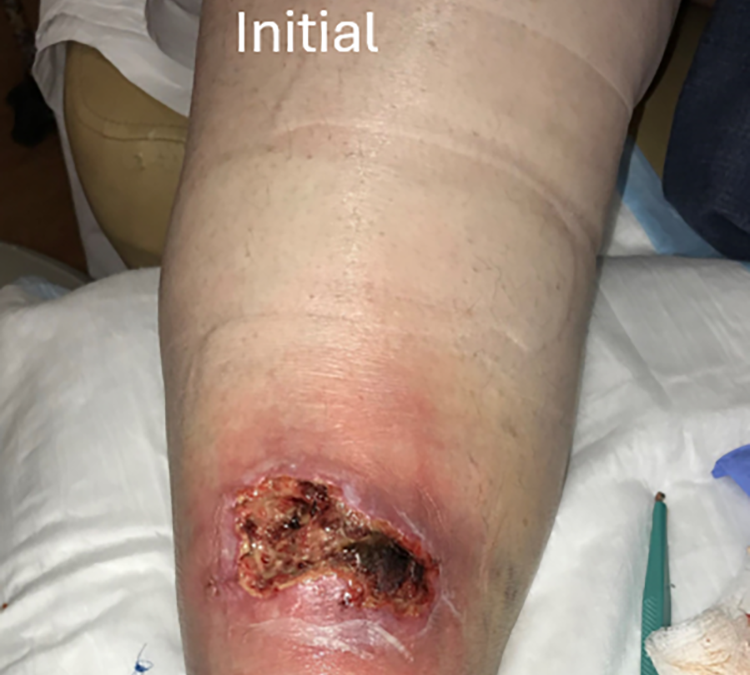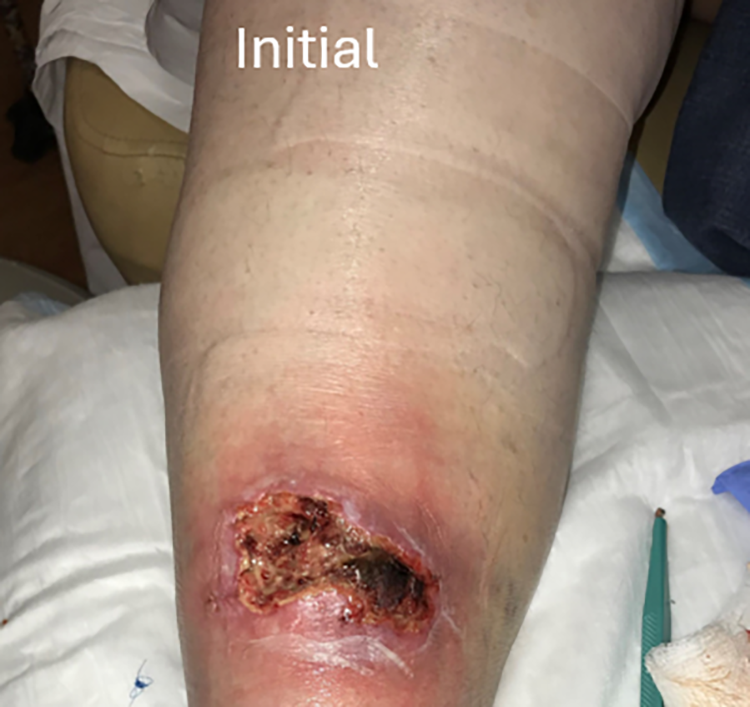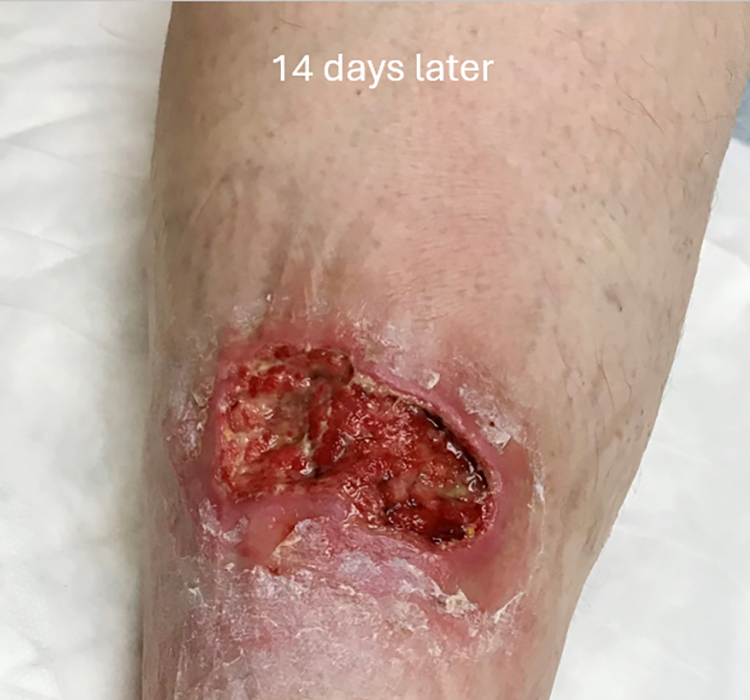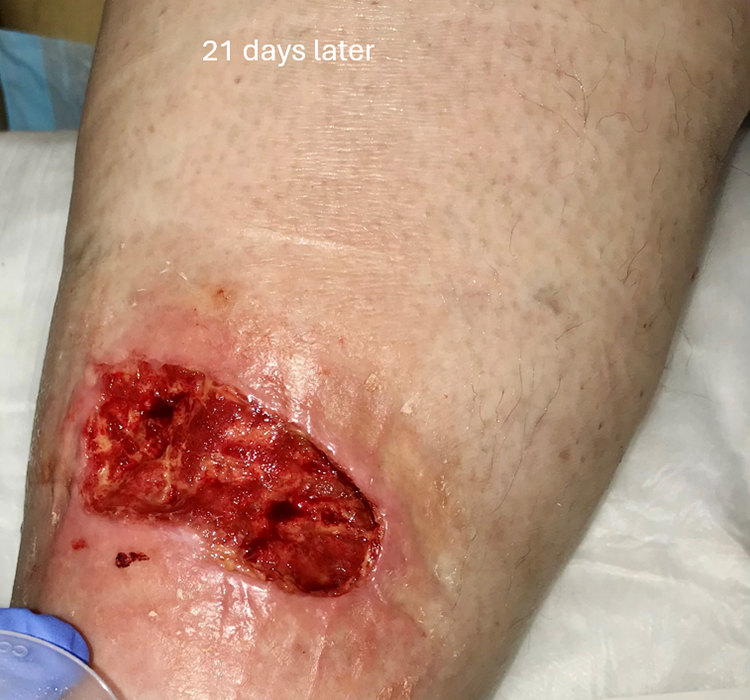On her initial visit, I simply put an absorbent dressing over the wound and wrapped her leg in a multilayer compression wrap to control the profound edema resulting from heart failure and constant dependency. Note how much necrotic material there is in the wound. A week later, there was a lot less necrotic tissue, but the only debridement was autolytic. I wrapped her leg again, and two weeks later, there’s a lot of granulation tissue and even less necrotic tissue. Again, I did no sharp debridement but placed another absorptive dressing covered by a compression wrap. Twenty-one days later, the area was completely granulated. The two red “dots” were tiny areas where she allowed me to remove two pencil eraser-sized areas of necrotic fat. In another month, she had completely healed.
I am not implying that sharp debridement isn’t important or useful. I am only demonstrating the healing power of edema control with compression bandaging. Edema control reduces tissue hypoxia and inflammation, among other beneficial effects. Unfortunately, sharp debridement is the economic model on which most wound centers are built. This worries me since I see a lot of patients with pyoderma and arterial disease who are made worse by it, and yet the wound care physicians keep performing sharp debridement weekly, watching the wounds get bigger and bigger. The way I treated her is not the way to optimize revenue, but it was the best way to manage a messy traumatic wound in a woman with a lot of complicating medical problems.

Dr. Fife is a world renowned wound care physician dedicated to improving patient outcomes through quality driven care. Please visit my blog at CarolineFifeMD.com and my Youtube channel at https://www.youtube.com/c/carolinefifemd/videos
The opinions, comments, and content expressed or implied in my statements are solely my own and do not necessarily reflect the position or views of Intellicure or any of the boards on which I serve.







